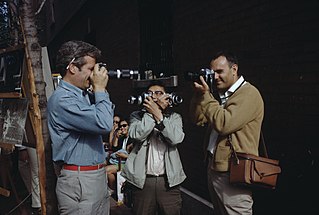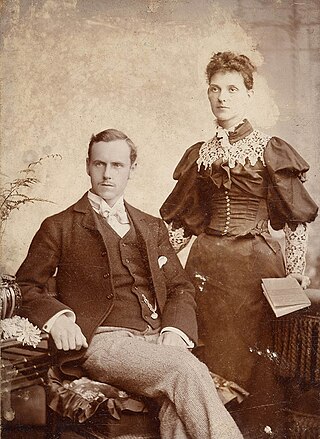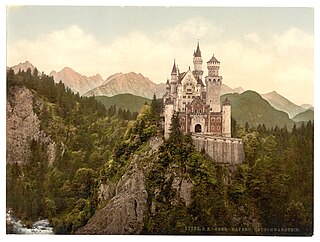Related Research Articles

Photography is the art, application, and practice of creating images by recording light, either electronically by means of an image sensor, or chemically by means of a light-sensitive material such as photographic film. It is employed in many fields of science, manufacturing, and business, as well as its more direct uses for art, film and video production, recreational purposes, hobby, and mass communication.

Printmaking is the process of creating artworks by printing, normally on paper, but also on fabric, wood, metal, and other surfaces. "Traditional printmaking" normally covers only the process of creating prints using a hand processed technique, rather than a photographic reproduction of a visual artwork which would be printed using an electronic machine ; however, there is some cross-over between traditional and digital printmaking, including risograph.

Calotype or talbotype is an early photographic process introduced in 1841 by William Henry Fox Talbot, using paper coated with silver iodide. Paper texture effects in calotype photography limit the ability of this early process to record low contrast details and textures. The term calotype comes from the Ancient Greek καλός, "beautiful", and τύπος, "impression".

Print on demand (POD) is a printing technology and business process in which book copies are not printed until the company receives an order, allowing prints in single or small quantities. While other industries established the build-to-order business model, POD could only develop after the beginning of digital printing because it was not economical to print single copies using traditional printing technologies such as letterpress and offset printing.

Pictorialism is an international style and aesthetic movement that dominated photography during the later 19th and early 20th centuries. There is no standard definition of the term, but in general it refers to a style in which the photographer has somehow manipulated what would otherwise be a straightforward photograph as a means of creating an image rather than simply recording it. Typically, a pictorial photograph appears to lack a sharp focus, is printed in one or more colors other than black-and-white and may have visible brush strokes or other manipulation of the surface. For the pictorialist, a photograph, like a painting, drawing or engraving, was a way of projecting an emotional intent into the viewer's realm of imagination.

The cyanotype is a slow-reacting, economical photographic printing formulation sensitive to a limited near ultraviolet and blue light spectrum, the range 300 nm to 400 nm known as UVA radiation. It produces a cyan-blue print used for art as monochrome imagery applicable on a range of supports, and for reprography in the form of blueprints. For any purpose, the process usually uses two chemicals: ferric ammonium citrate or ferric ammonium oxalate, and potassium ferricyanide, and only water to develop and fix. Announced in 1842, it is still in use.

A darkroom is used to process photographic film, make prints and carry out other associated tasks. It is a room that can be made completely dark to allow the processing of light-sensitive photographic materials, including film and photographic paper. Various equipment is used in the darkroom, including an enlarger, baths containing chemicals, and running water.

Letterpress printing is a technique of relief printing for producing many copies by repeated direct impression of an inked, raised surface against individual sheets of paper or a continuous roll of paper. A worker composes and locks movable type into the "bed" or "chase" of a press, inks it, and presses paper against it to transfer the ink from the type, which creates an impression on the paper.

Combination printing is a photographic technique of using the negatives of two or more images in conjunction with one another to create a single image.

Vintage, in winemaking, is the process of picking grapes and creating the finished product—wine. A vintage wine is one made from grapes that were all, or primarily, grown and harvested in a single specified year. In certain wines, it can denote quality, as in Port wine, where Port houses make and declare vintage Port in their best years. From this tradition, a common, though not strictly correct, usage applies the term to any wine that is perceived to be particularly old or of a particularly high quality.

A tintype, also known as a melainotype or ferrotype, is a photograph made by creating a direct positive on a thin sheet of metal, colloquially called 'tin', coated with a dark lacquer or enamel and used as the support for the photographic emulsion. Tintypes enjoyed their widest use during the 1860s and 1870s, but lesser use of the medium persisted into the early 20th century and it has been revived as a novelty and fine art form in the 21st.
Erotic photography is a style of art photography of an erotic, sexually suggestive or sexually provocative nature.

In photography, toning is a method of altering the color of black-and-white photographs. In analog photography, it is a chemical process carried out on metal salt-based prints, such as silver prints, iron-based prints, or platinum or palladium prints. This darkroom process cannot be performed with a color photograph. The effects of this process can be emulated with software in digital photography. Sepia is considered a form of black-and-white or monochrome photography.

Photochrom, Fotochrom,Photochrome or the Aäc process is a process for producing colorized images from a single black-and-white photographic negative via the direct photographic transfer of the negative onto lithographic printing plates. The process is a photographic variant of chromolithography. Because no color information was preserved in the photographic process, the photographer would make detailed notes on the colors within the scene and use the notes to hand paint the negative before transferring the image through colored gels onto the printing plates.

The history of photography began with the discovery of two critical principles: camera obscura image projection and the observation that some substances are visibly altered by exposure to light. There are no artifacts or descriptions that indicate any attempt to capture images with light sensitive materials prior to the 18th century.

Fine-art photography is photography created in line with the vision of the photographer as artist, using photography as a medium for creative expression. The goal of fine-art photography is to express an idea, a message, or an emotion. This stands in contrast to representational photography, such as photojournalism, which provides a documentary visual account of specific subjects and events, literally representing objective reality rather than the subjective intent of the photographer; and commercial photography, the primary focus of which is to advertise products, or services.

Wedding photography is a specialty in photography that is primarily focused on the photography of events and activities relating to weddings. It may include other types of portrait photography of the couple before the official wedding day, such as a pre-wedding engagement session. On the wedding day, the photographer(s) will provide portrait photography as well as documentary photography to document the different wedding events and rituals throughout the wedding day(s).

Hand-colouring refers to any method of manually adding colour to a monochrome photograph, generally either to heighten the realism of the image or for artistic purposes. Hand-colouring is also known as hand painting or overpainting.

A Woodburytype is both a printing process and the print that it produces. In technical terms, the process is a photomechanical rather than a photographic one, because sensitivity to light plays no role in the actual printing. The process produces very high quality continuous tone images in monochrome, with surfaces that show a slight relief effect. Essentially, a Woodburytype is a mold produced copy of an original photographic negative with a tonal range similar to a Carbon print.
Erich Retzlaff was a German photographer who focused primarily on portraits of workers, farmers, peasants and peasant costumes.
References
- ↑ "VINTAGE PRINTS AND MODERN PRINTS: WHAT'S THE DIFFERENCE?". Nico Epstein. Retrieved 26 May 2016.